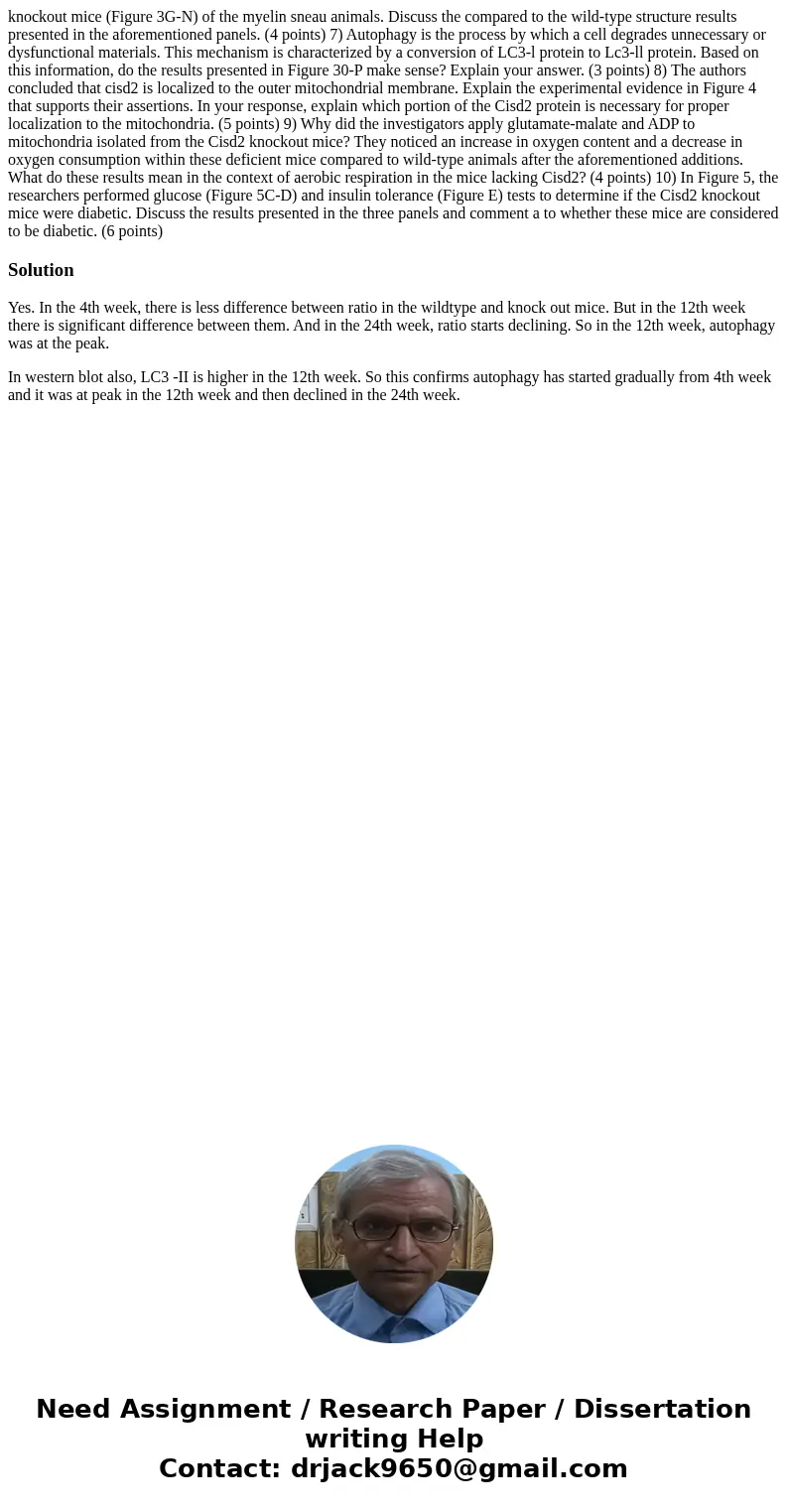knockout mice Figure 3GN of the myelin sneau animals Discuss
knockout mice (Figure 3G-N) of the myelin sneau animals. Discuss the compared to the wild-type structure results presented in the aforementioned panels. (4 points) 7) Autophagy is the process by which a cell degrades unnecessary or dysfunctional materials. This mechanism is characterized by a conversion of LC3-l protein to Lc3-ll protein. Based on this information, do the results presented in Figure 30-P make sense? Explain your answer. (3 points) 8) The authors concluded that cisd2 is localized to the outer mitochondrial membrane. Explain the experimental evidence in Figure 4 that supports their assertions. In your response, explain which portion of the Cisd2 protein is necessary for proper localization to the mitochondria. (5 points) 9) Why did the investigators apply glutamate-malate and ADP to mitochondria isolated from the Cisd2 knockout mice? They noticed an increase in oxygen content and a decrease in oxygen consumption within these deficient mice compared to wild-type animals after the aforementioned additions. What do these results mean in the context of aerobic respiration in the mice lacking Cisd2? (4 points) 10) In Figure 5, the researchers performed glucose (Figure 5C-D) and insulin tolerance (Figure E) tests to determine if the Cisd2 knockout mice were diabetic. Discuss the results presented in the three panels and comment a to whether these mice are considered to be diabetic. (6 points) 
Solution
Yes. In the 4th week, there is less difference between ratio in the wildtype and knock out mice. But in the 12th week there is significant difference between them. And in the 24th week, ratio starts declining. So in the 12th week, autophagy was at the peak.
In western blot also, LC3 -II is higher in the 12th week. So this confirms autophagy has started gradually from 4th week and it was at peak in the 12th week and then declined in the 24th week.

 Homework Sourse
Homework Sourse